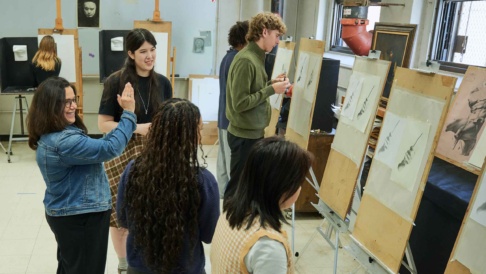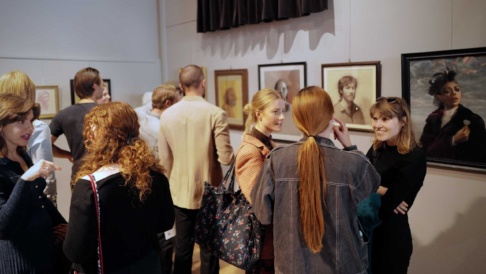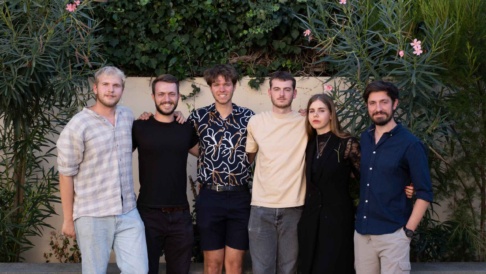This weeks’s Spotlight on Art features La Marionetta by Former Director of Sculpture at FAA Rob Bodem.
La Marionetta was sculpted during my tenure as Director of the sculpture program at the FAA at my studio on Via Luna.
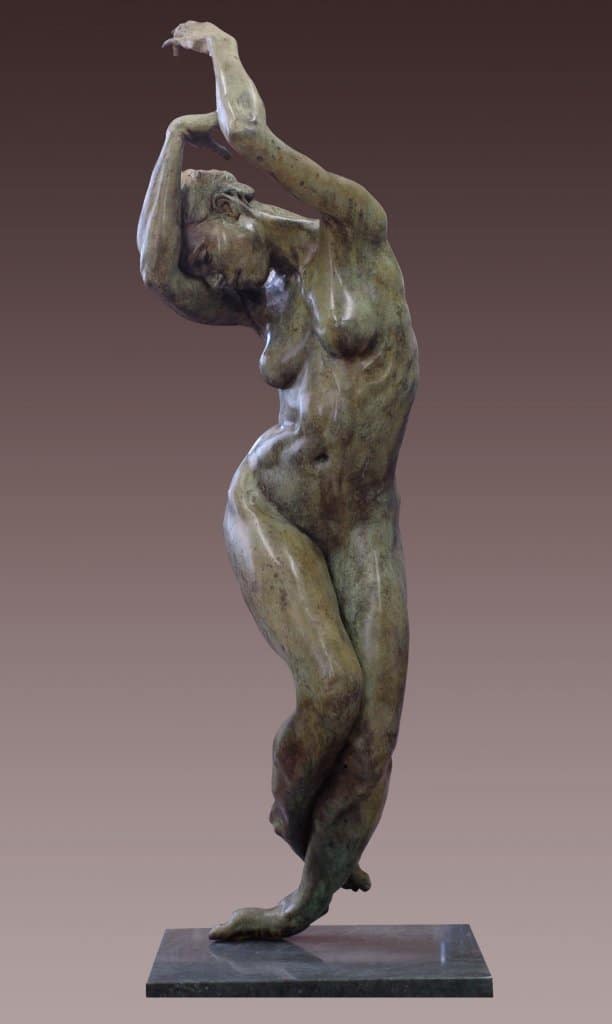
Rob Bodem,”La Marionetta”, Bronze, Life size, 2009
As a figurative sculptor looking to always create unique works, the concept of a marionette sprung from the fascination of what possibilities there would be in poses/gestures where the subject is not in control of what is occurring. The second sculpture with this theme, La Marionetta was created during a moment in my life when I fell in love with my eventual wife who lived in a different country. As we endured a number of years with this physical distance a constant emotion, it was the feeling of being “in limbo.” This Marionette was intended to convey this emotion; a solitary figure, neither rising nor falling, in limbo.
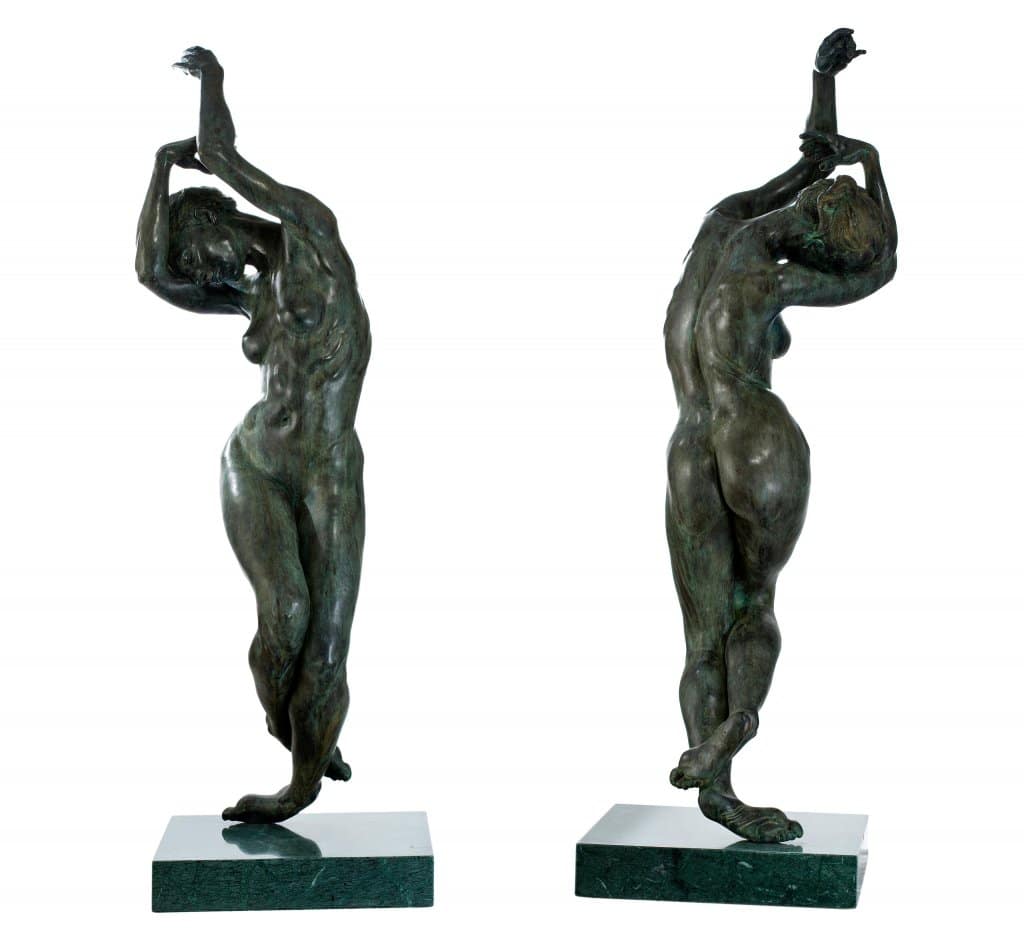
I produced a small scale maquette of the work which hasn’t survived. The study besides helping me answer questions about the pose and composition of the sculpture prior to sculpting in life size was crucial to present to the foundry. The final sculpture was life-size which would be heavy in bronze. With only one contact/resting point on the base, my biggest concern was if the foundry could create this work in bronze and mount it as I intended. I oversaw several successful castings in bronze, and was overjoyed to see the first edition mounted on a marble base.
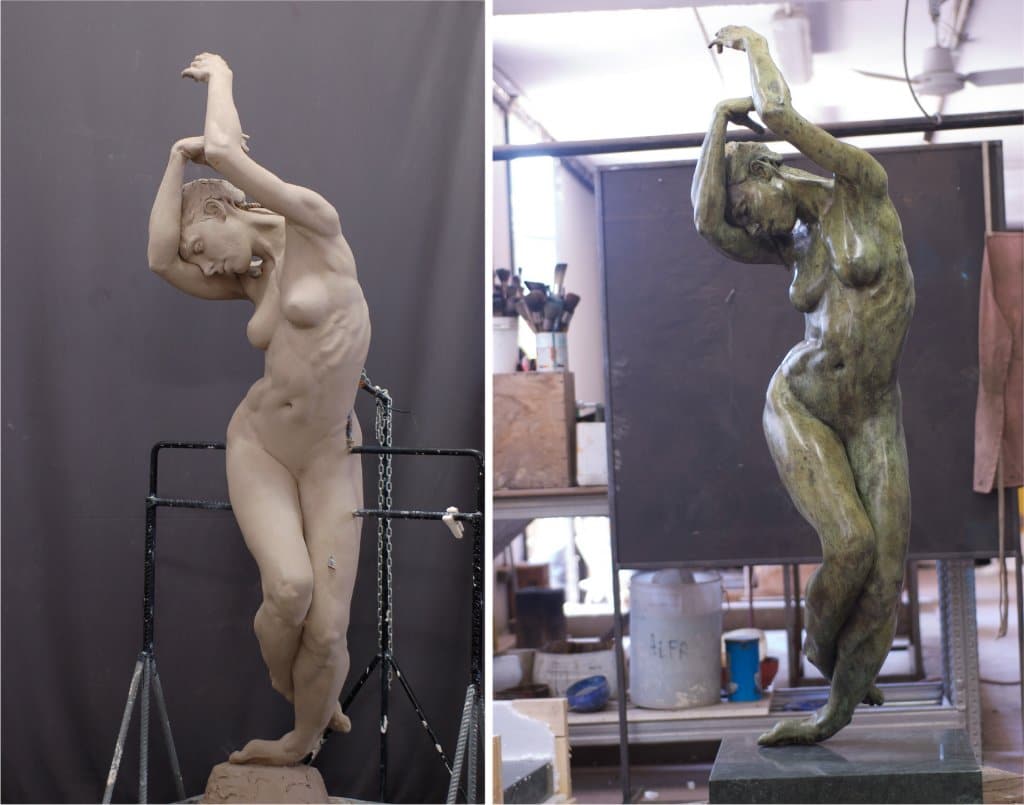
This piece taught me one the MOST valuable lessons I have learned as a sculptor. Naturalistic figurative sculpture does not need to be made solely by observing a model in pose. This was a departure point for me since prior to this I was relying on posed models to help execute my work. I needed to adapt the process I was “used to” in order to capture the naturalistic qualities I desired for my sculpture, qualities that are unique to individuals and are “easier” to capture when they can be observed and compared in a static situation. Connecting the body via internal structures, eliminating foreshortening while comparing the sculpture to the model, and constructing the figure in “pieces” when necessary are concepts that not only became useful to me to but also for the FAA sculpture program and for the students who studied with me.
As an artist who is aware of the tradition of figurative sculpture throughout previous centuries, it is important for me to not repeat or glean from those who I admire, but rather to create something new, never seen before. I feel that I have done that with this piece.
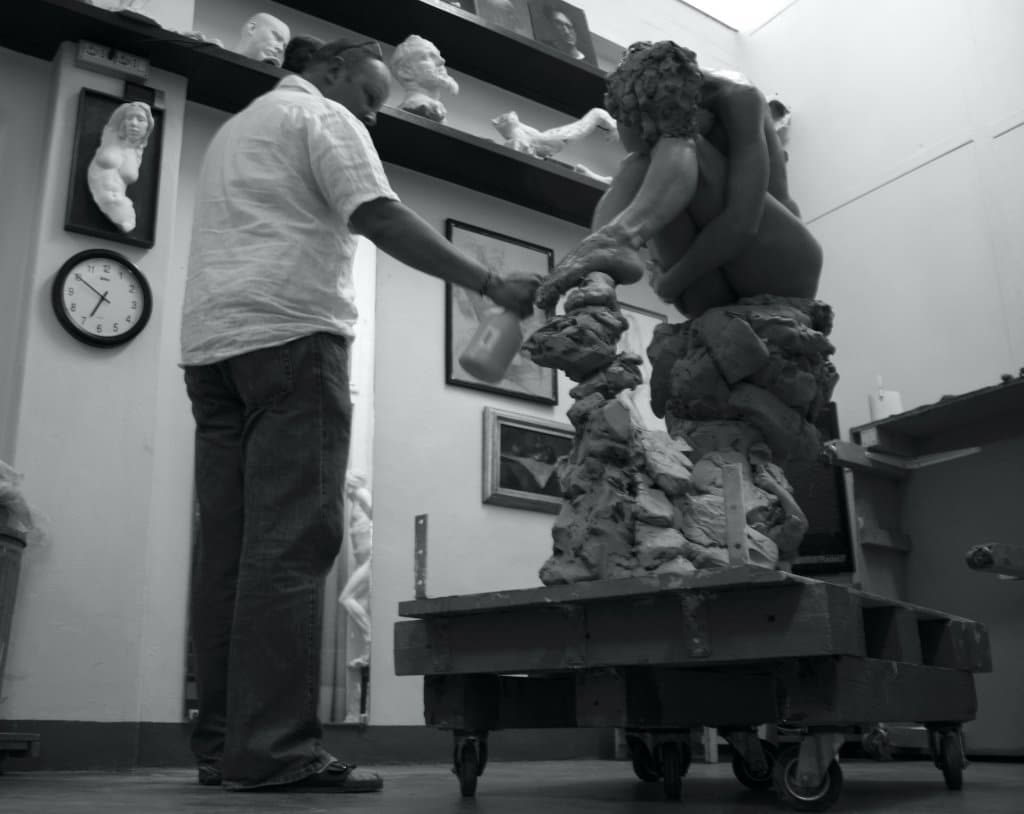
More about Rob:
Robert Bodem is a figurative sculptor living and working in Athens, Greece. He exhibits in bronze across Europe and his works can be found at Gallery Michael, Beverly Hills and Grenning Gallery, Sag Harbor.
Robert received his Bachelors and Masters in Fine Arts in Sculpture at Boston University. In 1998, he was awarded the Albert S. and Ester B. Kahn Award which provided him with the financial support while establishing The Florence Academy of Art’s Sculpture Program. Over his two decades as Director of Sculpture, Robert developed his methodology “Drawing in Space”. This resulted in a unique curriculum that has given voice to a generation of highly prolific figurative sculptors. Today, Robert teaches workshops from his studio in Athens and in collaboration with ateliers internationally.
Rob is originator of the concept, “Drawing in Space,” his unique approach to sculpture, and authored the manual by the same name.
Here is his personal philosophy about sculpting:
“Lessons from a Golf Course” (A question about nature)
This past summer I was introduced to a completely enjoyable and unexpected experience – golfing. Forgetting the actual frustration of playing the game, the simple pleasure of spending a day walking outdoors was fun. It is ironic that this pleasurable experience turned out to be a valuable lesson, both to my work as a teacher and as a sculptor. No one can dispute that studying the human figure from life is a challenge whether the challenge lies in understanding proportions, internal structure or the quality of the forms, themselves. These difficulties are what made me initially reject the study of the human figure, but they became the challenge I chose to confront later on, in order to observe the figure accurately and understand its aesthetic range. To see and understand the human figure as a whole is the first challenge we face. To retain this while introducing the variety of forms that nature offers us, as evidenced by a softer mass surrendering to a harder one, or by a bone surfacing, only to escape and disappear under another form, is a greater challenge still. This variety can never be measured, only seen and understood. Studying the human figure on this level, where one can describe in one’s work the hardest form in comparison to the softest, and the infinite range in between, or equally, the deepest transition compared to the shallowest, should not be understood as being a slave to nature but a means to a greater goal: to develop an aesthetic vocabulary to help one fully express one’s ideas as they develop in one’s work. A writer who lacks a full range of vocabulary cannot be fully descriptive. A musician who cannot reach a high E cannot play most music. A painter without the knowledge of the value range from dark to light struggles with the illusion of three dimensions. Taking a brief survey of contemporary sculpture, there seems to be a lack of range of vocabulary in figurative work. One might imagine that pursuit of this vocabulary is suppressed or ignored for the sake of producing pleasant, professional and manicured sculptures. The lesson I learned having spent summer afternoons walking on a golf course, feeling it as a pleasant activity, is that if I could choose I would walk in the woods, where the path might often be unclear, where variety in nature exists and is vibrant, where senses seem to awaken.
To view more of Rob’s work visit:
Website: www.robertbodem.com
Atelier: www.athenssculptureatelier.com
Instagram: @robertbodem
FAA Alumni Gallery: Robert Bodem



